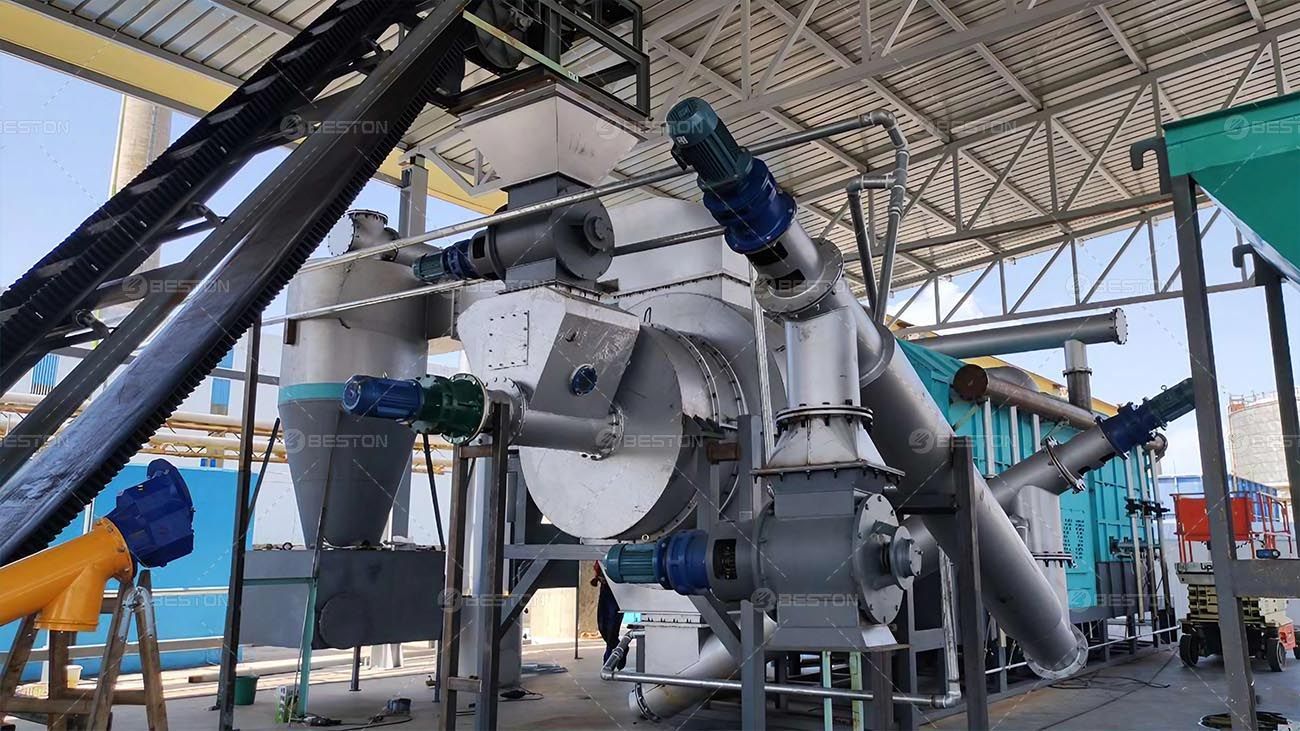Forest Biomass Conversion: Mitigating Fire Hazards Through Biochar Production
- By Beston Charcoal
- •
- 20 May, 2025
- •
In regions prone to wildfires, unmanaged forest biomass poses a persistent ecological and safety risk. Accumulated deadwood, dry leaves, bark, and undergrowth create combustible fuel beds that elevate fire intensity and complicate suppression efforts. One pragmatic and scalable strategy to reduce this hazard involves the deployment of biochar machine systems to thermochemically convert forest waste into stable carbon.
Hazard Mitigation Through Feedstock Reduction
Dry organic matter acts as a fire accelerant under drought or heatwave conditions. Mechanical clearing alone offers temporary relief, often followed by reaccumulation within a few seasons. In contrast, pyrolytic conversion permanently removes excess biomass from the fuel cycle.
By integrating a mobile or modular biochar machine near high-risk forest zones, forestry agencies and contractors can systematically process this surplus into biochar. Unlike open burning or chipping, this method significantly reduces greenhouse gas release while simultaneously sequestering carbon in solid form. The reduction in surface and ladder fuel continuity lowers the probability of crown fires, which are typically the most destructive.

Decentralized Biochar Processing Units
Conventional fire mitigation strategies involve transportation of waste to centralized facilities, increasing operational costs and emissions. Modern biochar pyrolysis equipment systems—especially those designed for off-grid environments—support decentralized deployment. Trailer-mounted reactors, designed for continuous operation, can process heterogeneous forest residues in-situ.
These units operate through controlled pyrolysis, maintaining oxygen-deficient conditions to avoid combustion. The thermal profile is optimized to yield maximum char content while minimizing volatile off-gas. Thermal energy recovered during the process can be used to power ancillary equipment, making the system more energy-autonomous.
Valorization of Pyrolyzed Forest Residue
Beyond risk mitigation, biochar production introduces value-added opportunities. The resultant biochar, when applied to soil, improves water retention, cation exchange capacity, and microbial activity. Forest-rich regions often suffer from degraded soils due to logging or overuse. Reintroducing biochar into reforested zones enhances regrowth rates and improves seedling resilience.
In agricultural belts adjacent to forests, this biochar becomes a viable soil amendment—transforming waste into a marketable commodity. Producers utilizing a precision-engineered biochar machine can standardize output characteristics such as particle size, porosity, and pH level, tailoring product specifications to end-user requirements.
Emission Offset and Regulatory Compliance
Forest management organizations increasingly face mandates to reduce fire risk while adhering to emission reduction goals. Controlled pyrolysis serves both objectives. The carbon sequestered in biochar remains stable for hundreds to thousands of years, qualifying it for potential carbon offset credits under voluntary or compliance markets.
Moreover, replacing open pile burning with pyrolytic conversion avoids significant emissions of methane, particulate matter, and black carbon. When conducted under a permitted framework using low-emission biochar machine technology, the process aligns with air quality regulations and public health safeguards.
Strategic Integration with Fire Prevention Programs
Forest service entities and private landowners can integrate biochar production into broader fire prevention frameworks. Fuel break maintenance, underbrush thinning, and post-harvest slash removal all generate biomass suitable for conversion. By incorporating pyrolysis units into seasonal field operations, fire mitigation becomes both economically viable and environmentally regenerative.
Public-private partnerships offer a mechanism for scaling these operations. Incentivizing biochar deployment through subsidies, tax credits, or carbon finance accelerates adoption. Additionally, education programs for landowners and contractors can ensure safe, efficient, and compliant operation of biochar machines.
